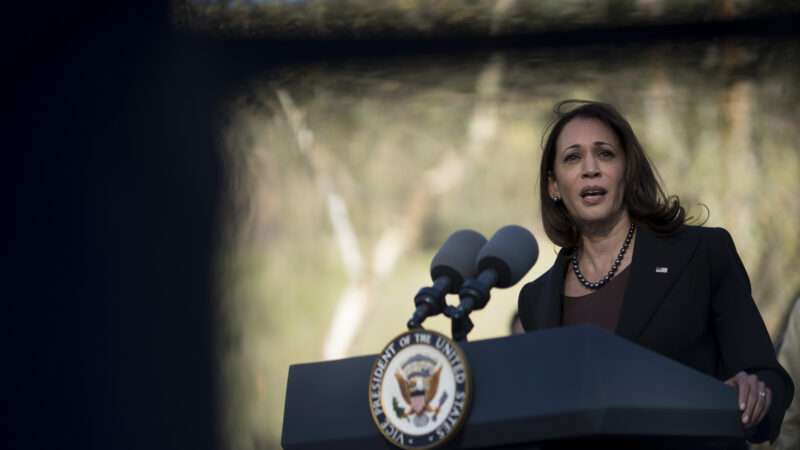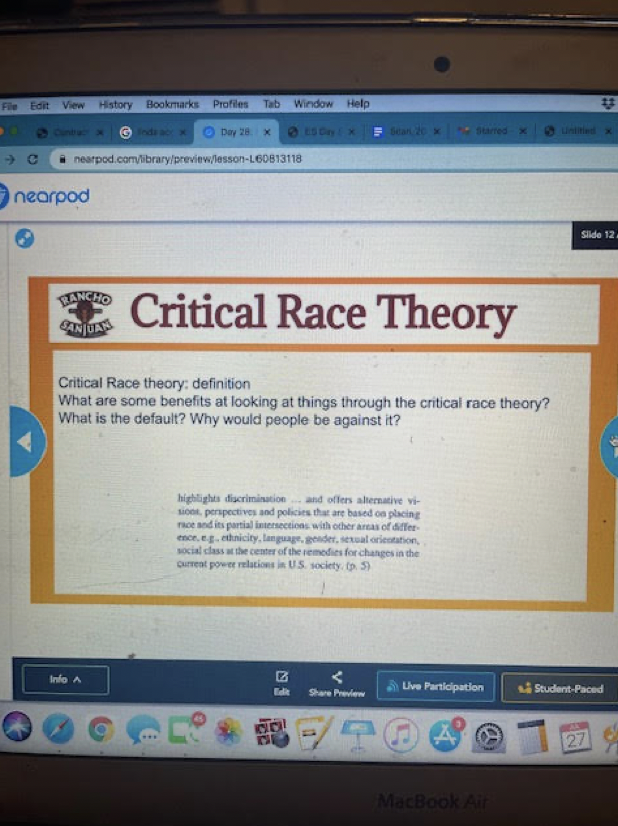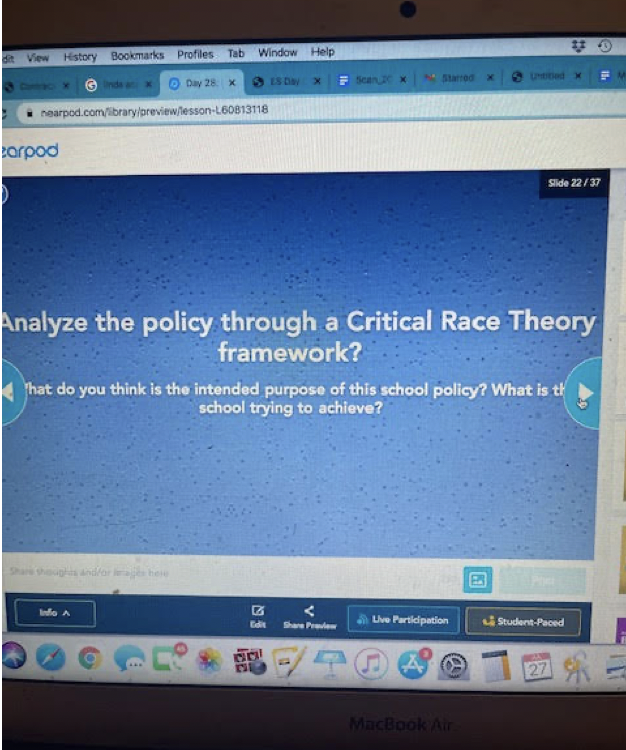
Vice President Kamala Harris is back to making misleading statements about human trafficking. In a speech to the President’s Interagency Task Force to Monitor and Combat Trafficking in Persons, Harris—who has a long history of dishonesty about sex trafficking—said that “in 2020 alone, there were 11,000 instances of human trafficking that were reported in the United States.”
Where did Harris get that figure? From calls to the Polaris Project’s national human trafficking hotline, a source of misleading statistics that I’ve been warning about for years. Media and politicians routinely cite Polaris’ numbers as if they accurately reflect instances of human trafficking (a category that includes forced prostitution and forced labor in other categories), and they use these numbers to push for all sorts of policies. But the large numbers Polaris puts out are not—thank goodness—verified cases of abuse and criminal activity; they’re jusr a tally of contacts to the hotline. That includes pranks, cranks, and people reporting sightings of consensual sex work.
It’s refreshing (and all too rare) to see a major news outlet acknowledge this reality, as like The Washington Post‘s Glenn Kessler did in a column last week. Kessler calls out both Harris and Virginia’s Republican governor, Glenn Youngkin, who in a recent executive order stated that “according to Polaris…there were 179 cases of trafficking and seventy-seven traffickers identified in Virginia in 2019 alone.”
Kessler—who has previously tackled other false or misleading claims about human trafficking—points out that the Polaris numbers are mostly anecdotal:
Polaris derives these figures from an analysis of calls to the National Human Trafficking Hotline that it operates. In the 2021 fiscal year, according to budget documents given to Congress, the Department of Health and Human Services provided $4 million to operate the hotline, which receives calls, texts, chats, emails and other online reports. If the staff members answering the calls or other inquiries identify elements of fraud, force and coercion, then that gets listed as a possible instance of human trafficking.
The hotline “identified 11,193 potential cases of trafficking, responded to 13,129 signals from potential victims, and reported 3,353 cases to law enforcement,” the HHS document says.
Notice that these are “potential cases”—and only about 30 percent ended up being reported to law enforcement. The budget document also notes that “viral misinformation about human trafficking”—such as “complex schemes involving child sex trafficking”—led to a surge of a “well-intended but inaccurate, secondhand reports” that distracted from helping real victims.
In case you missed it above, I’m going to reiterate: Only about a third of these “potential cases” are even reported by Polaris to law enforcement. They don’t know how many of those prompt the police to open an investigation, let alone what those investigations uncover.
Polaris likes to act like its numbers are only the tip of the iceberg, since not all instances of trafficking will be reported to the hotline. But while it’s true that not all trafficking comes to Polaris’ attention, the group’s numbers also reflect all sorts of things that don’t turn out to be human trafficking.
The group—and those citing it—also like to tout an increase in contact with the hotline as evidence that this problem is getting worse. But the increase in calls and other contacts comes as the federal government and states have started requiring more and more types of businesses to post the number conspicuously.
For what it’s worth, FBI trafficking numbers, compiled from police departments around the country, are much smaller than the number of calls to the Polaris hotline.
“For 2019, in Virginia, the FBI reports that there were 41 incidents of human trafficking—and 29 cases led to arrests, including one for a person under the age of 18. That’s much smaller than the 189 ‘cases’ reported by Polaris,” notes Kessler.
And “for the entire country, the FBI reported a total of 1,883 incidents of human trafficking in 2019: 1,607 were in the category of commercial sex acts, and 274 were instances of involuntary servitude. That’s about one-fifth of the incidents cited by Harris.”
Even in this case, “incidents” do not necessarily mean instances of trafficking, simply that police started a report to look into potential trafficking. Of the 1,883 incidents reported to the FBI, only a fraction led to arrests—684 adults arrested and 24 minors. And arrests don’t necessarily mean that anyone was ultimately charged with trafficking, let alone convicted.
Citing misleading statistics about human trafficking might not seem all that harmful at first glance. But giving a false impression of the scope of the problem leads to all sorts of harms, both personal and political. It creates the conditions for crazy conspiracy theories like those seen with QAnon believers and for ordinary people to panic about everyday interactions and “stranger danger.” It leads to attempts to Do! Something! that often wind up as crackdowns on poor people, sex workers, and immigrants. And it gives cover to officials who want an excuse for more policing and surveillance of everyone.
FREE MINDS
Neil Young’s science misinformation. Neil Young removed his music from Spotify because he thinks the platform isn’t doing enough to stop Joe Rogan from spreading misinformation about vaccines. But Young has done his own misinformation-mongering, Louis Anslow points out at The Daily Beast. See Young’s 2015 anti-biotechnology album, The Monsanto Years:
Young’s anti-GMO rhetoric helped fuel a narrative that made it easy to spread fear and distrust about COVID vaccines, most of which used novel biotechnology methods and some of which use genetic engineering.
A collective amnesia has set in amongst progressives regarding the left’s past pandering to the anti-biotechnology movement. Reactionary luddism—especially around biotechnology—was both politically correct and convenient for progressive celebrity activists. But that was in the “before times.”
Young championed the anti-GMO movement even as evidence of the safety of genetically modified food and its potential to do good increased.
The anti-GMO movement—which rose to prominence in the mid 1990s and early 2000s—attained a key legislative win in 2014 when Vermont mandated GMO labeling of food….
The new Vermont law threatened to be a pointless and impractical nightmare for food manufacturers, so trade groups sued the state….As the case garnered coverage, the anti-GMO crowd was re-energized once more. And Neil Young seized the moment, releasing The Monsanto Years and embarking on a tour of the same name. At one pre-show press conference, accompanied by Vermont’s then-Democratic Gov. Peter Shumlin, Young pledged $100,000 to the legal case defending the GMO labeling law.
FREE MARKETS
Net neutrality law in California is a go.
9th Cir. holds that California may impose its own net neutrality regulations on broadband internet services provided to customers in California. https://t.co/Z2Tb3PynAE pic.twitter.com/Xvll7zqlKf
— Gabriel Malor (@gabrielmalor) January 28, 2022
See Reason‘s net neutrality coverage here. More on the California case here.
FOLLOWUP
IRS facial scans being reconsidered. “The Treasury Department is reconsidering the Internal Revenue Service’s reliance on facial recognition software ID.me for access to its website, an official said Friday amid scrutiny of the company’s collection of images of tens of millions of Americans’ faces,” Bloomberg News reports.
See last Monday’s Roundup for more on the IRS’s ID.me plan.
QUICK HITS
"What we’re seeing now is the reaction to a left-wing power grab. And — guess what? — it’s a right-wing power grab. Two forms of illiberalism at war. The liberal option is still there – as an off-ramp."https://t.co/WSelEsHNHl
— Andrew Sullivan (@sullydish) January 28, 2022
• Book bans are back in vogue—and more politicized than ever, school officials say.
• “A federal judge on Friday blocked a Texas law barring government entities from doing business with contractors that participated in boycott, divestment and sanctions (BDS) activity from being enforced against a Palestinian-American contractor, saying that the law infringed on the contractor’s First Amendment rights,” reports The Hill.
• NPR explores how an overactive immune system may contribute to Alzheimer’s disease—and how understanding that could lead to new treatments.
• Adam Thierer rounds up skeptical takes on expansive industrial policy:
"Skeptical Takes on Expansive #IndustrialPolicy Efforts" https://t.co/b49p59L1yb
[* A regularly updated compendium. New additions from @EricBoehm87, @ENBrown, myself, others. Please suggest other relevant essays I may have missed.]— Adam Thierer (@AdamThierer) January 30, 2022
The post Kamala Harris Spreads Misinformation on Human Trafficking appeared first on Reason.com.
from Latest – Reason.com https://ift.tt/b3JrXWsuV
via IFTTT






